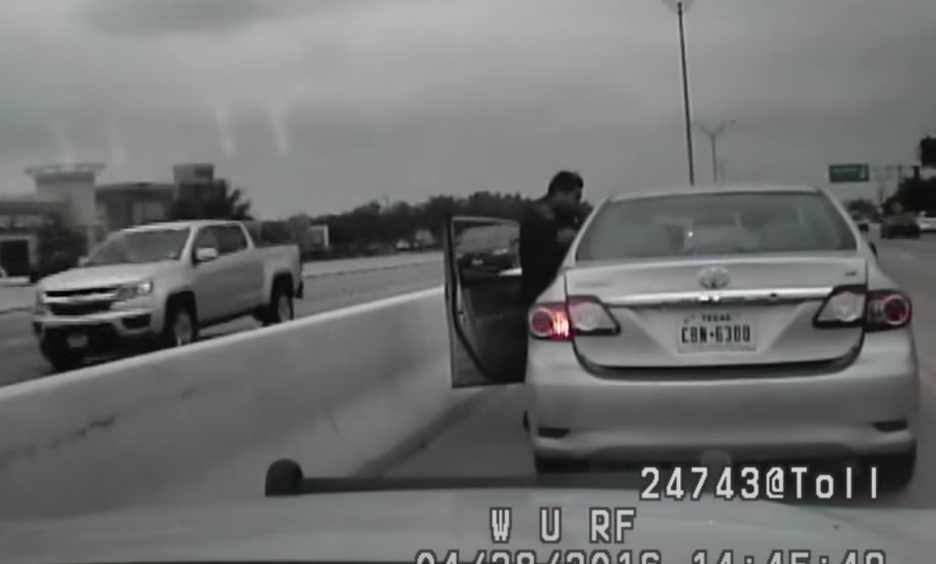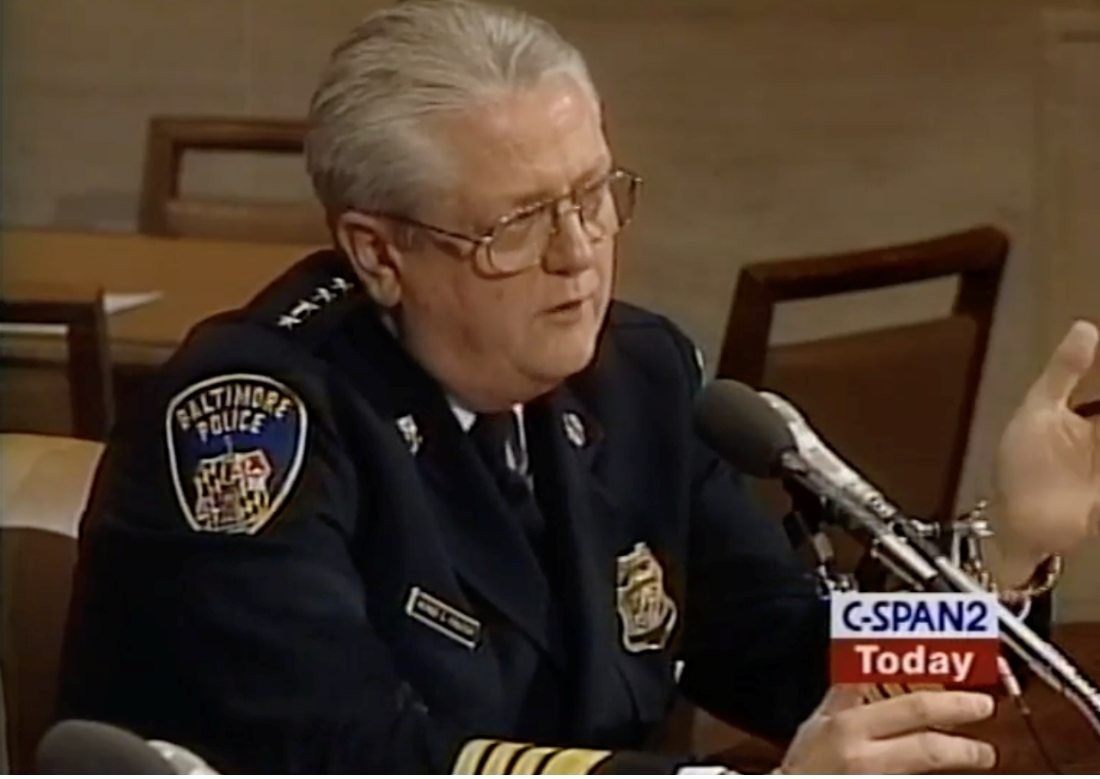|
May 24, 2025 A Supreme Court decision on use of force; DOJ’s decision on consent decrees; and the death of former Baltimore police commissioner, PERF president, and COPS Office director Tom Frazier
PERF members, In this week’s column, I’ll discuss at length the Supreme Court’s recent decision on use of force, then briefly touch on the DOJ’s announcement that they are stepping back from pattern and practice investigations and the sad news that past PERF president Tom Frazier has died. Supreme Court Barnes v. Felix decision Last week, in the case of Barnes v. Felix, the United States Supreme Court issued a ruling about how courts should analyze the use of force by law enforcement. The case began, as so many do, with a routine traffic stop. Harris County (Texas) Officer Roberto Felix, Jr., pulled over Ashtian Barnes for “suspected toll violations.” During the stop, Mr. Barnes attempted to drive away with the car door open while Officer Felix was beside the car. In response, Officer Felix stepped onto the driver’s side doorsill. [See photo below, excerpted from publicly released body-worn camera footage.]
Officer Felix twice shouted at Mr. Barnes to stop moving; he then fired two shots, killing Mr. Barnes. Two seconds passed between the time Officer Felix stepped onto the doorsill and the time he fired his weapon. The issue before the Supreme Court was how courts should evaluate the reasonableness of Officer Felix’s use of force. The debate centered around which of two standards should be used: the “moment of the threat” or the “totality of the circumstances”? What do those standards mean, and what is the difference between them? When analyzing the use of force, courts that have used the “moment of the threat” analysis have looked only at the moment the force was used to determine if it was reasonable. In Barnes v. Felix, a “moment of the threat” analysis would focus only on the moment Officer Felix was on the doorsill, being carried into traffic by the moving vehicle, because that was when Officer Felix used force against Mr. Barnes. Courts that use the “totality of the circumstances” analysis evaluate an incident more broadly than just assessing the moment force was used. These courts examine all relevant circumstances leading up to the use of force, without a strict time limit, considering additional context about the moment force is used. In Barnes v. Felix, a “totality of the circumstances” analysis would include the entire interaction between the two men, including Mr. Barnes pulling away and Officer Felix stepping onto the moving vehicle. The Supreme Court ruled that all federal courts should apply the “totality of the circumstances” standard when reviewing use of force cases. The Supreme Court chose to decide Barnes v. Felix because there was a split among lower courts about which standard to use. Most federal courts already used the “totality of the circumstances” standard, so this ruling won’t change how force is reviewed for officers in those jurisdictions. What are the implications for law enforcement? Courts will examine all force incidents holistically, through a broad lens, in much the same way we encourage agencies to conduct internal reviews of their critical incidents. This wider lens will often support the officer—such as if, during the time leading up to a police shooting, the subject was repeatedly verbally threatening to shoot. It could also support the subject, such as if, during that same period, the subject was sitting peacefully and doing nothing threatening or suspicious. I don’t believe the ruling automatically favors or disfavors either party. The decision also underscores the importance of training, policies, and procedures that encourage critical thinking and prioritize de-escalation during high-stress situations. Agencies must prepare their officers for the critical moments leading up to these incidents, because those moments will unambiguously factor into a court’s use of force analysis. Officers are set up to fail if they haven’t been trained to think critically; slow things down, and establish time, distance, and cover. For instance, agencies should review their pursuit policies, their policies on shooting into moving vehicles, and their policies and training on interacting with people in mental health crises. PERF’s ICAT training programemphasizes critical thinking skills and sets officers up for success when dealing with stressful and often mishandled situations such as those involving restraint. This type of policy review and training is consistent with the holding of Barnes v. Felix. Finally, Barnes v. Felix underscores the importance of a practice we have long stressed at PERF—“Monday-morning quarterbacking,” which involves scrutinizing officer tactics and agency policy and training in the wake of critical incidents. Monday-morning quarterbacking applies a “totality of the circumstances” analysis to critical incidents, whether they end poorly or well, to learn from incidents and evolve as an agency. In a traffic stop that goes poorly, for instance, agencies must take the time to conduct a thoughtful and thorough debrief that covers the following questions—not to cast blame but to learn:
Seth Stoughton, a former police officer who now teaches law and runs the Excellence in Policing and Public Safety Program at the Joseph F. Rice School of Law at the University of South Carolina, agrees. PERF reached out to Seth after the Supreme Court’s decision was announced, and he stressed that Barnes v. Felixis an opportunity to remind agencies that after critical incidents, “when they are doing their reviews, they need to do so by looking broadly at the totality of the circumstances, not just at the moment that force was used.” Last week, the Supreme Court said it also agreed. DOJ announcement about consent decrees On Wednesday, the U.S. Department of Justice announced that it is “beginning the process of dismissing lawsuits against the Louisville, Kentucky, and Minneapolis, Minnesota, police departments.” DOJ’s Civil Rights Division is also “closing its investigations into and retracting the Biden administration’s findings of constitutional violations on the part of” the police departments in Phoenix, Arizona; Trenton, New Jersey; Memphis, Tennessee; Mount Vernon, New York; and Oklahoma City, Oklahoma, as well as the Louisiana State Police. In 2012, PERF brought together police executives and representatives from the DOJ’s Civil Rights Division to discuss DOJ “pattern and practice” investigations. The resulting report identified some common issues in these consent decrees and made some observations about the process. In many cities, there was concern and shock that the federal government was going to have a say in local policing. And the role of the court-appointed monitor was often controversial. Many chiefs said the whole process could be cumbersome, bureaucratic, and lengthy. But importantly, once they came to accept it, those chiefs figured out how to use the court order to obtain the needed resources to make reforms, improve department performance, and strengthen relationships with their communities. Police executives who told me this include former Baltimore police commissioner Kevin Davis, former New Orleans police superintendent and Baltimore police commissioner Mike Harrison, former LAPD chief Bill Bratton, former Cincinnati chief Tom Streicher, and former Pittsburgh chief Bob McNeilly. Police agencies need leadership and resources to make continuous improvements to their agencies. As DOJ steps back from “pattern and practice” investigations and consent decrees, the federal government still has an important role to play in improving police. I hope they will stay engaged by identifying best practices and supporting technical assistance, training, and research into what works. Passing of former Baltimore police commissioner, COPS Office director, and PERF president Tom Frazier
Then-Baltimore Police Commissioner Tom Frazier speaks to members of Congress about the importance of afterschool programs. Source: C-SPAN Finally, I want to share the sad news that former Baltimore police commissioner and PERF president Tom Frazier passed away on May 16. Tom spent the bulk of his career with the San Jose Police Department, retiring as a deputy chief. He then led the Baltimore Police Department from 1994–1999. He also served as Director of the DOJ’s Office of Community Oriented Policing Services (COPS Office) and as Executive Director of the Major Cities Chiefs Association. Tom was often ahead of his time and wasn’t afraid to take on controversial issues. His “West Coast” ideas sometimes challenged conventional “East Coast” thinking. In San Jose, detectives were rotated to patrol after a period of time, but homicide detectives strongly opposed a similar policy when he implemented it in Baltimore. Tom wasn’t afraid to speak his mind and try creative approaches to difficult problems. He touched a lot of lives, and his influence lives on. Thanks to former San Jose captain and Los Gatos, California, chief Scott Seaman, who was close with Tom, for making me aware of this sad news. Have a great Memorial Day weekend! Best, Chuck |


